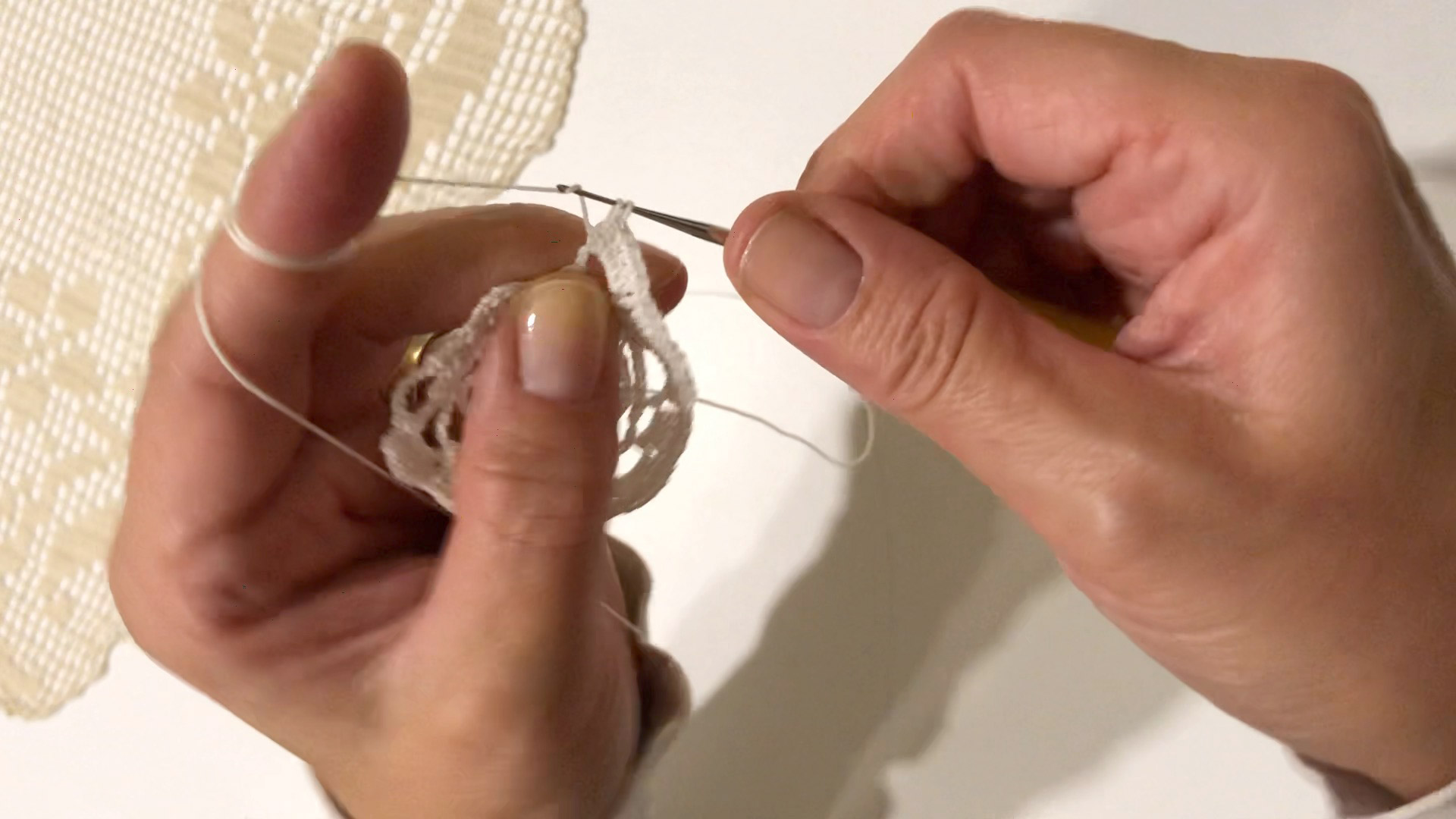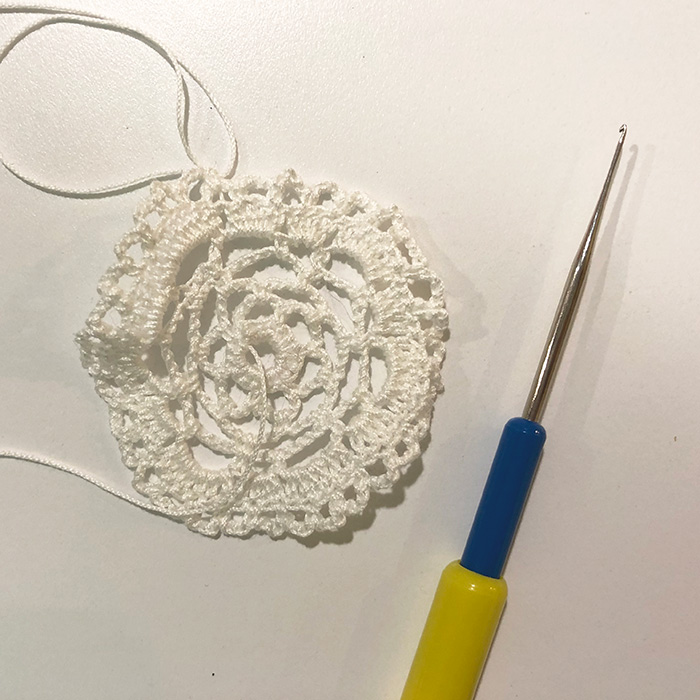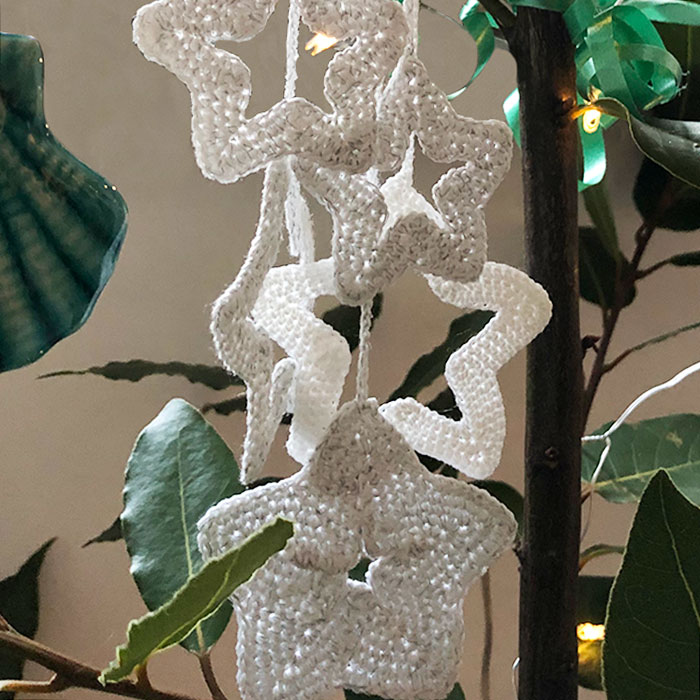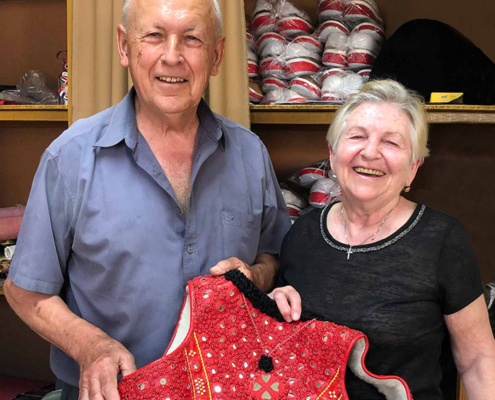A local artist named Virginia Nenadović has kindly taught us a little about the intricacies and patience that go in to this beautiful art form. Virginia was taught by her Nona from the time she was seven years old.
She tells us the quality of a work is based not only on its design, but also on the thinness of the thread and the tightness of the stitches. A small design may take from one to several hours depending on how fine the thread and how skilled the artist. The finished piece can be as simple as a small flower or as complex as a large tablecloth.
Although yarn or other materials may be used, the finest Croatian heklanje is made from thin cotton konac (thread), traditionally in a white or off-white color, using a tiny heklica (hook) made of bone, ivory, wood, or metal. The thread is wrapped around one finger, and with the tiny hook in the other hand, the artist catches the string and pulls it through one or more loops to create intricate designs. Although a pattern may be decided beforehand or repeated, it’s not like a painting where you can sketch out the big picture and then work in smaller and smaller detail as you are inspired. Instead the tiniest details build one upon another to gradually reveal the design that is in the mind of the artist. There is no going back, as the thread and work are continuous. Thus each piece is an original work of art.
The video on this page is not sped up—it is in real time. It’s difficult to capture still images because Virginia’s hands are moving so fast. She was talking to us while she was working, only glancing at her work. We had heard about this, from stories or memories of a baka or teta who worked so intuitively that her hands knew the stitches without looking.
Today, it is difficult for a visitor to find much heklanje for sale. There isn’t a viable market among locals since Croatian families typically have their own legacies, with handwork made by mothers, grandmothers, and aunts, tucked away in drawers. Like so many other artisans, Virginia doesn’t sell her work. She showed us magical little stars, gorgeous flowers, and stunning table runners, all lovingly created for her family—she is keeping the traditions alive in her own home.
Thank you, Virginia, for teaching us about your beautiful artwork!















 2019 DOMA Trading
2019 DOMA Trading 2019 Leslie Brienza Photography, 2019 DOMA Trading
2019 Leslie Brienza Photography, 2019 DOMA Trading 2019 DOMA Trading
2019 DOMA Trading